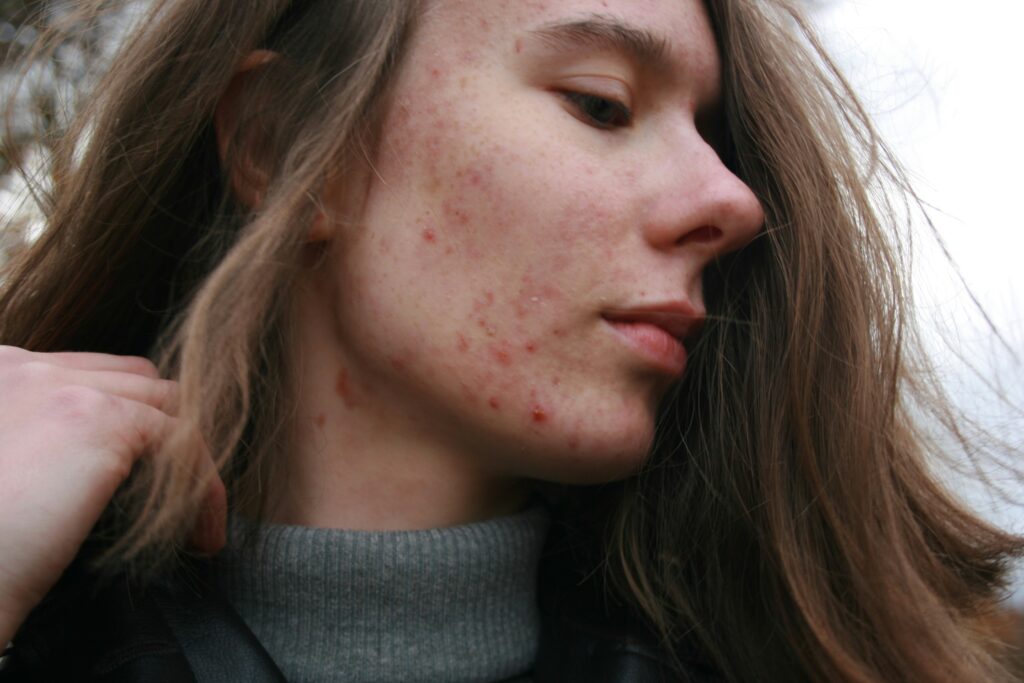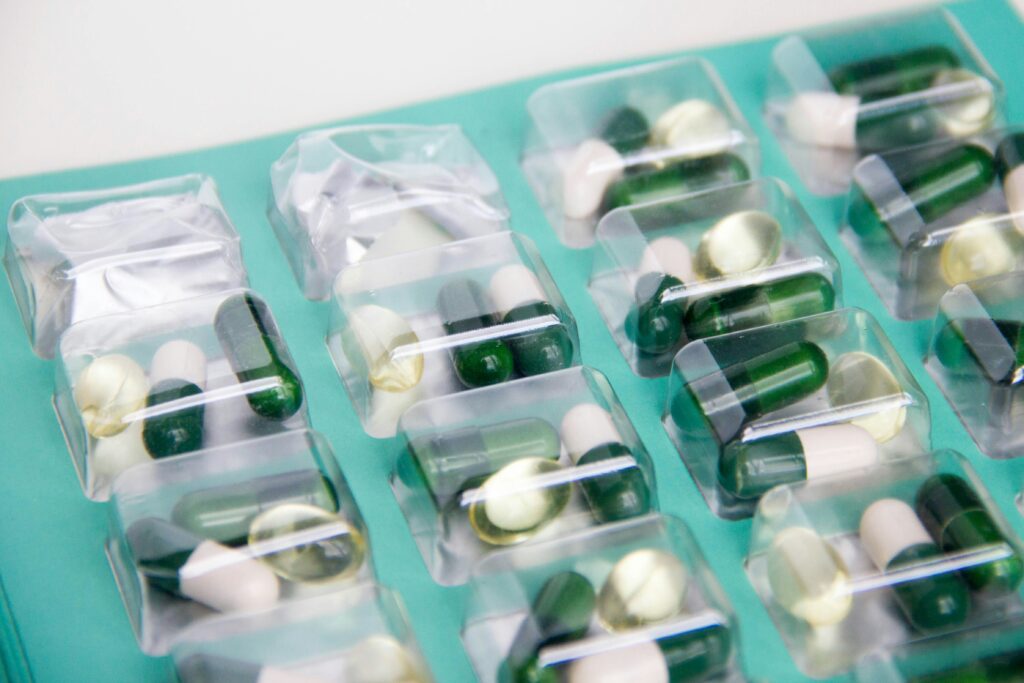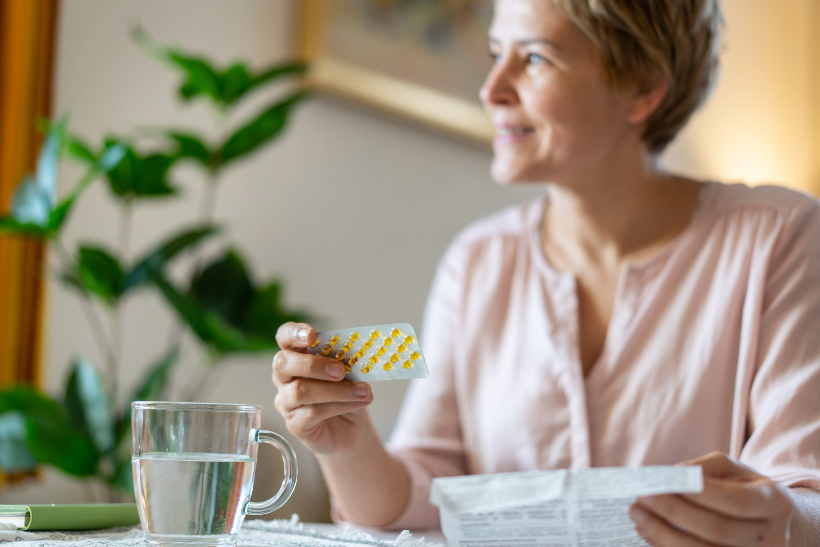Testosterone, while most commonly associated with men, is also important for female health. However, when levels surpass typical limits, it can cause a variety of health problems. Understanding how to control and lower testosterone levels in women is critical for sustaining overall health.
In this blog, we will explore the factors influencing testosterone levels in women, including the causes and symptoms of high testosterone in women. We will also discuss effective methods for lowering testosterone, such as dietary changes, medication, and lifestyle modifications to manage hormone levels and related symptoms.
Testosterone in Women
According to the American College of Obstetricians and Gynecologists (ACOG), typical testosterone levels in women range from 6-76 pg/mL. While the ovaries and adrenal glands create tiny quantities of testosterone, the majority is produced in peripheral tissues through the conversion of another hormone, androstenedione.
Normal testosterone levels in women are crucial for maintaining overall health. Deviations from this range can lead to various health issues, including symptoms such as acne and hirsutism, especially in PCOS patients.
Here’s a breakdown of testosterone’s primary activities in women:
- Sexual Function: Testosterone promotes a healthy libido, arousal, and orgasm.
- Bone Health: Adequate testosterone levels are required to maintain healthy bones and avoid osteoporosis.
- Muscular Mass: Testosterone helps grow and maintain muscular mass.
- Mood Regulation: Studies indicate that testosterone may alter mood and energy levels.
However, as testosterone levels rise, these functions might be severely compromised.
Symptoms of High Testosterone in Women

If you feel you have high testosterone, you should visit a healthcare expert for an accurate diagnosis and therapy. Here are some possible indicators of elevated testosterone levels in women:
- Irregular Menstrual Cycles: High testosterone levels might disturb ovulation, resulting in irregular periods or even amenorrhea (lack of menstruation).
- Acne: Increased testosterone levels may contribute to acne outbreaks, especially on the face, chest, and back.
- Excessive Body Hair Growth: Hirsutism, defined as excessive hair growth on the face, chest, belly, or back, might be a sign of high testosterone. Excess body hair is a common symptom of high testosterone levels, often seen in conditions like Polycystic Ovarian Syndrome (PCOS).
- Male Pattern Baldness: Although less prevalent, certain women with elevated testosterone may develop hair loss or male pattern baldness.
- Muscular Mass Gain: High testosterone levels can lead to increased muscular mass, especially in the arms, legs, and shoulders.
- Decreased Breast Size: Some women with elevated testosterone levels may notice a reduction in breast size.
- Mood Changes: Elevated testosterone levels may be associated with mood swings, impatience, or violence.
- Voice Deepening: In rare circumstances, high testosterone may cause a slightly deeper voice in women.
Causes of High Testosterone in Women
Polycystic Ovarian Syndrome (PCOS)
Polycystic Ovarian Syndrome (PCOS) is a prevalent hormonal condition that affects women of reproductive age. It is distinguished by hormonal abnormalities, insulin resistance, and ovarian cysts.
Approximately 70-80% of women with PCOS have high testosterone levels due to excessive androgen production (ACOG). Hormonal imbalance disturbs the regular menstrual cycle, resulting in acne, hirsutism (excessive hair growth), and infertility. PCOS symptoms include acne, hirsutism, and irregular menstrual cycles, and these symptoms are often linked to elevated testosterone levels.
Insulin Resistance

Women with PCOS frequently develop insulin resistance, which occurs when the body’s cells become less receptive to insulin, resulting in high insulin levels in the blood. Insulin resistance causes the ovaries to generate more androgens, especially testosterone, which leads to hormonal abnormalities.
Adrenal Hyperplasia
The adrenal glands overproduce hormones, especially androgens. One such condition is congenital adrenal hyperplasia (CAH), an inherited disorder that causes the body to overproduce testosterone. This can lead to high testosterone levels in women, resulting in symptoms such as severe acne and behavioral and physical masculinization. CAH is associated with the adrenal glands producing too little cortisol and too much testosterone. It is generally treated with medicine to reduce hormone production.
Medications

Some medications, including anabolic steroids, corticosteroids, and hormonal treatments such as testosterone replacement therapy, can raise testosterone levels in women. It is critical to discuss all drugs with a healthcare practitioner to determine their effect on hormone levels.
Lifestyle
Obesity, chronic stress, and insufficient sleep can all lead to **high testosterone levels,**especially in women. Obesity, in particular, is linked to increased insulin resistance and androgen production, which exacerbates hormonal imbalances. Weight gain, particularly in women with PCOS, can exacerbate high testosterone levels and contribute to hormonal imbalances. Managing these lifestyle variables through food, exercise, and stress management approaches can aid in hormone balance.
Factors Affecting High Testosterone

Age: Testosterone levels naturally fluctuate throughout a woman’s life. They are at their peak during the reproductive years and gradually decline after menopause. However, certain lifestyle factors can accelerate this decline.
Hormonal Disorders: Conditions such as polycystic ovary syndrome (PCOS) can cause high testosterone levels in women. Addressing the underlying hormonal disorder is crucial for restoring balance. Managing blood sugar through diet, including foods like fatty fish and flaxseed, can help rebalance blood sugar levels and lower testosterone. Additionally, sex hormone-binding globulin (SHBG) levels can impact testosterone levels. Factors like hypothyroidism and insulin resistance can affect SHBG production, influencing testosterone concentration in the body.

Stress: Chronic stress can trigger the release of cortisol, a hormone that competes with testosterone for receptor sites. Managing stress through relaxation techniques, mindfulness, and adequate sleep is essential.
Diet and Exercise: Nutritional choices and physical activity significantly impact hormonal balance. A balanced diet and regular exercise can contribute to maintaining optimal testosterone levels.
Medications: Some medications, such as certain contraceptives and corticosteroids, can influence testosterone levels. Consultation with a healthcare professional is necessary to assess and manage medication-related effects on hormones.
How to Lower Testosterone in Women

1. Weight Loss
Losing weight can drastically lower testosterone levels in women, particularly those with PCOS and obesity-related hormonal abnormalities. According to research, even moderate weight reduction can restore hormone balance and alleviate symptoms linked with elevated testosterone. To help with weight control and hormone regulation, eat a well-balanced diet rich in nutritious foods and exercise regularly.
2. Healthy Diet
Eat entire foods including fruits, vegetables, whole grains, and lean meats. Avoid or limit processed meals, sweets, and unhealthy fats, which can all lead to hormone abnormalities. Include meals with anti-inflammatory and antioxidant characteristics, such as omega-3 fatty acids (found in salmon and flaxseeds) and colorful fruits and vegetables. Additionally, foods like spearmint tea and zinc-rich foods can help decrease testosterone levels.
3. Exercise
Exercise on a regular basis, incorporating both aerobic (such as brisk walking or swimming) and strength-training exercises. Exercise reduces insulin resistance, lowers cortisol levels, and improves overall hormonal balance
4. Medicines
If lifestyle changes alone are insufficient, healthcare practitioners may prescribe drugs to assist reduce testosterone levels. Anti-androgen drugs, such as spironolactone or birth control pills containing estrogen and progestin, can help balance hormone levels and reduce symptoms associated with excessive testosterone, especially in women with PCOS.
5. Natural Supplements
Some natural supplements may have anti-androgenic properties and assist reduce testosterone levels in women. For example, spearmint tea has been researched for its ability to lower testosterone levels in women with PCOS. Saw palmetto, which is often used for prostate health in males, may have comparable effects in women, but proof of efficacy is lacking.
Frequently Asked Questions
What happens if a woman’s testosterone levels are too high?
High testosterone levels in women can cause symptoms such as irregular menstrual cycles, acne, excessive hair growth, male-pattern baldness, a deeper voice, greater muscular mass, libido changes, and possibly long-term health problems including cardiovascular disease.
What supplements reduce testosterone in women?
Natural products with anti-androgen characteristics, such as spearmint tea and saw palmetto, may help reduce testosterone levels in females. However, before taking any new supplements, talk with your healthcare physician.
What foods lower testosterone?
Foods heavy in refined carbohydrates, bad fats, and processed foods may increase testosterone levels. To help regulate hormones, eat a diet rich in complete foods such as fruits, vegetables, whole grains, and lean meats.
Conclusion
Women with high testosterone levels need to manage their levels using an approach that involves medication, lifestyle changes, and occasionally medical procedures. Women can successfully reduce testosterone levels and enhance their quality of life by treating underlying reasons and increasing general health through nutrition, exercise, and appropriate medical treatments.
If you enjoyed this article, you may also want to read this article Does Eating Peanut Butter Increase Testosterone in Men?
*This information is not intended to serve as a substitute for professional medical or dietary advice tailored to individual needs.




